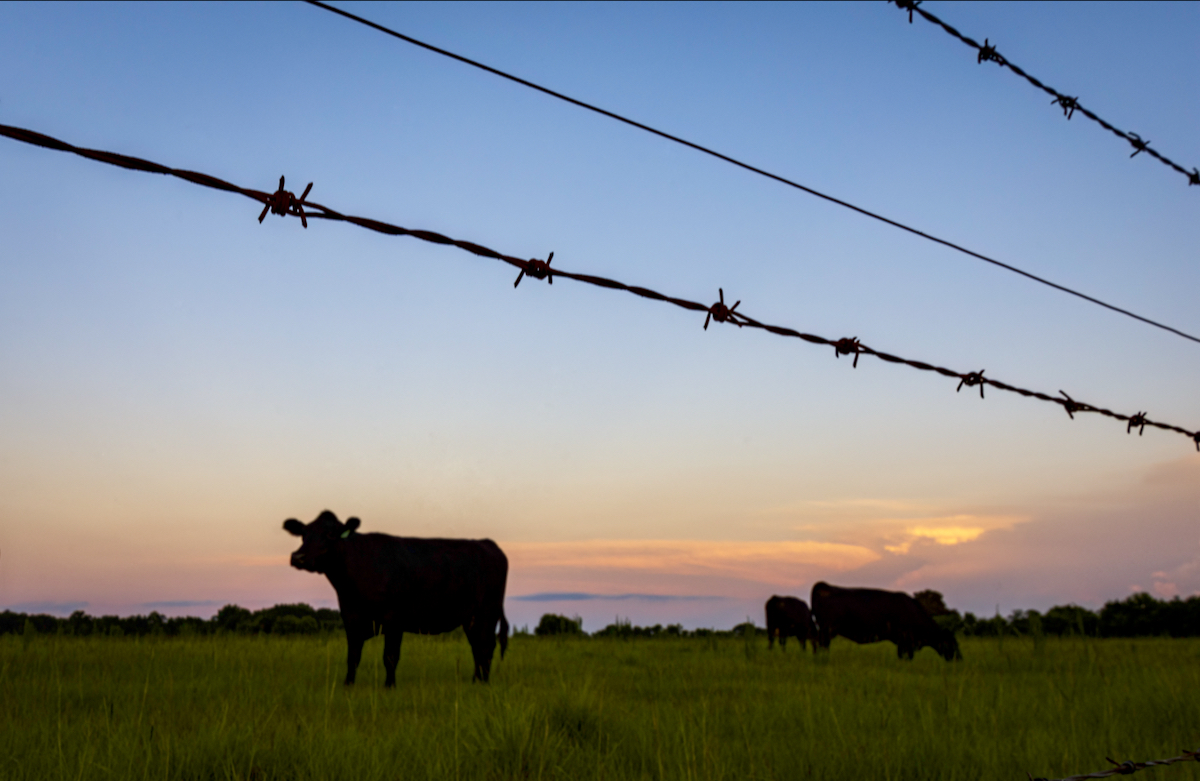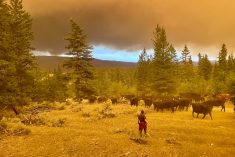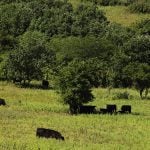Ranching in southern Alberta can be divided into two eras. One before the fence, and the one that came to stay, after the fences.
From D. Larraine Andrews’s book, Ranching Under the Arch:
“Responding to the new lease legislation, four corporate ranches, dubbed the Patriarchs, arrive under open range practices dependent on chinooks to keep grasslands open and highly nutritious fescue. The Cochrane, Oxley, Bar U and Waldron, at their peak, controlled 40 per cent of leased land in southern Alberta.”
Ranching before fences started through investment by British aristocracy. Open range, large herds, chinooks and nutritious fescue led people to believe cattle could successfully graze year-round on the eastern slopes of the Rockies. But chinooks, nicknamed “snow eaters,” didn’t always come when needed. The infamous winters of 1886-87 and 1906-07 saw tens of thousands of cattle die of starvation and cold. The ranching industry, at the time, made little effort to put up feed for emergency use when chinooks failed to appear. Drought and fires through the summer of 1886 exacerbated winter, which started in November and didn’t end until March. The “Big Die-Up” of 1886-87 claimed herds across southern Alberta and southwestern Saskatchewan. This oversight spelled the end of open-range grazing.
Read Also

Building demand together: The impact of Canada’s beef import levy
The beef import levy has become a central tool for ensuring balance in Canada’s beef industry
The Patriarchs suffered, and many big corporate ranches on both sides of the border collapsed. But many smaller ranches survived, as they cross-fenced to stockpile feed, and manage grazing, breeding and calving.
The Kansas Barbed Wire Museum in La Crosse, Kansas, is the only museum in the world dedicated solely to barbed wire and the history of fencing. The “devil’s rope” is known by everyone. Few are aware that it changed history.
Barbed wire is cited by historians as the invention that tamed the West, a revolutionary invention that changed the world in more ways than most realize. Apart from controlling the movement of cattle and construction of inexpensive fences, it is also used as a security measure atop walls surrounding property and became a major feature of fortifications in trench warfare during wars, especially in the First World War.
Herding large numbers of cattle on open range required significant manpower. Barbed wire provided an inexpensive method to control cattle movement and in a relatively short time, reduced the number of cowboys necessary to manage ranches on a day-to-day basis.
Barbed wire fencing requires only fence posts, wire and staples. It is simple to construct and quick to erect, even by an unskilled person. Thousands of miles of fences soon carved Alberta into manageable chunks with many names and brands intact for over a century.
The United States issued the first patent for barbed wire in 1867 to Lucien B. Smith of Kent, Ohio, who is regarded as the first inventor. Joseph F. Glidden of DeKalb, Illinois, received a patent for a more modern design in 1874 after he made modifications to previous versions.
When wire fences became widely available in the United States in the late 19th century, it became more affordable to fence much larger areas than before and made intensive animal husbandry more practical on a much larger scale.
In his 1949 post-war poem Memorial for the City, W.H. Auden used barbed wire as a symbol for borders, bureaucracy and violence. “Barbed wire proclaims that you are kept out or kept in, and, when you resist, it rips you,” he wrote. “Other barriers weather, crumble, grow moss; wire merely rusts, and keeps its sting.” For many, that’s barbed wire’s appeal.
The first wire fences (before the invention of the barb) consisted of one strand, which easily broke under the weight of cattle pressing against it. Michael Kelly made a significant improvement to wire fencing when he twisted two strands together, enclosing the barbs between them. This was the first move toward modern barbed wire.
Following the American Civil War, open plains in the U.S. were extensively settled. A similar transition followed in Canada. Ranchers needed to establish boundaries to land they bought or claimed, railroads through the growing West needed to keep livestock off rail lines and farmers needed to keep stray cattle from trampling crops. Barbed wire fences became a cost-effective way to preserve profits for everyone.
Between 1873 and 1899 there were as many as 150 companies manufacturing barbed wire. Investors knew that the business required minimal capital, and almost anyone with determination could profit by manufacturing a new wire design. Many were consolidated into larger companies, most notably the American Steel and Wire Company.
- RELATED: No trespass – Cutting wire
Barbed wire has caused major conflicts. For example, Texas Panhandle ranchers reached a point where their holdings could not support the grazing of additional cattle. The only alternative was to block cattle migrations with barbed wire fencing. Many of the herds were decimated in the winter of 1885, with some losing as many as three-quarters of all animals when they could not find a way around the fence. Later other smaller-scale ranchers, opposed to the close of open range grazing, began cutting fences to allow cattle to pass. Conflict erupted. Armed vigilantes joined the fray. Lives were lost through the “Fence-Cutting Wars.”
Barbed wire was important in protecting range rights in the Western U.S. and Canada.
One fan wrote the inventor Joseph Glidden: “It takes no room, exhausts no soil, shades no vegetation, is proof against high winds, makes no snowdrifts, and is both durable and cheap.”

















